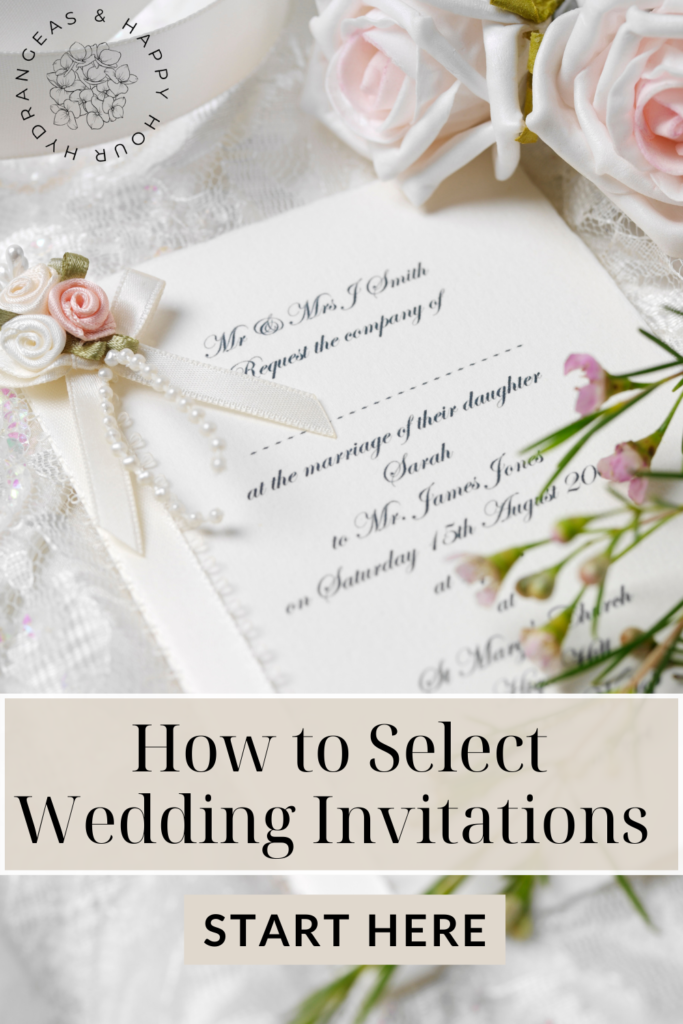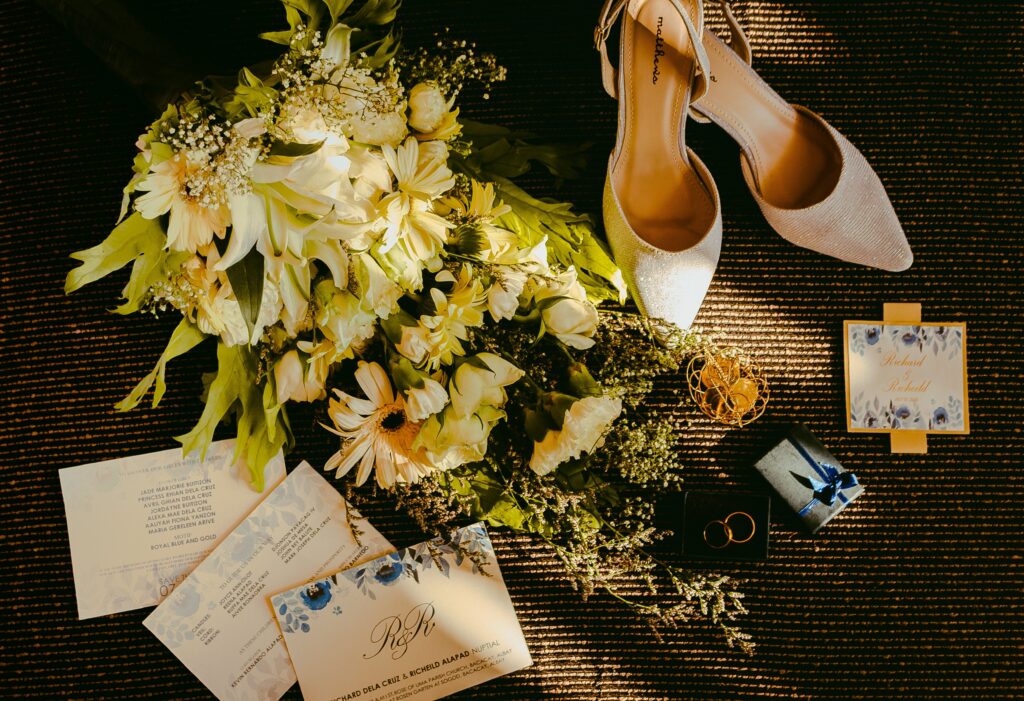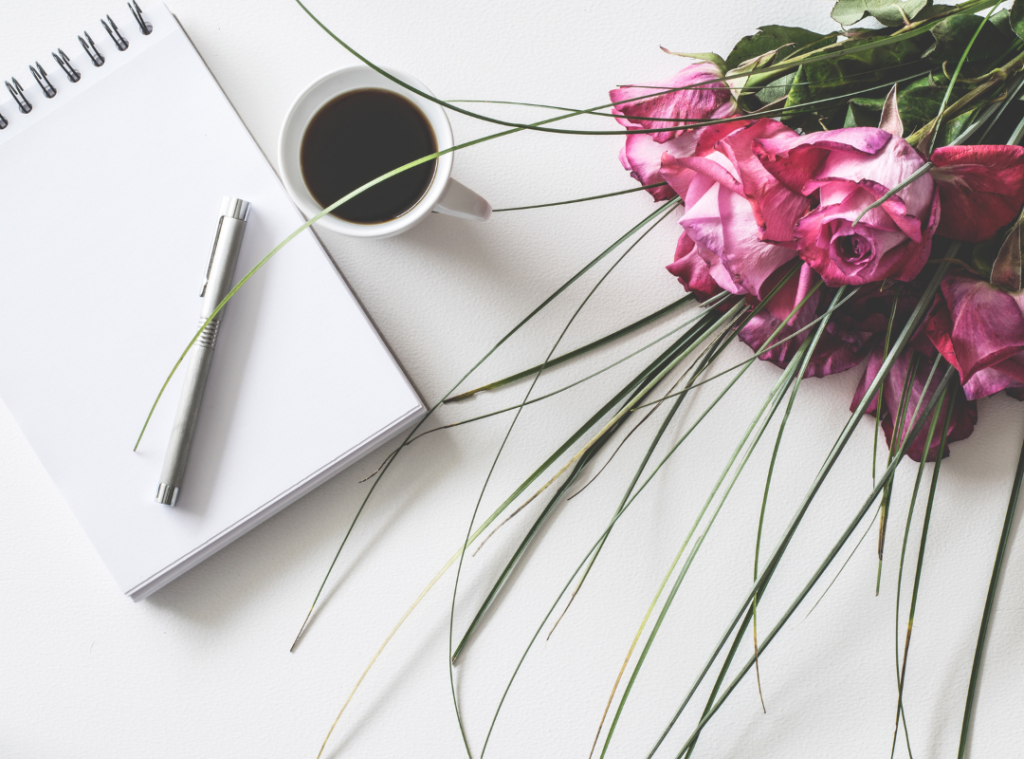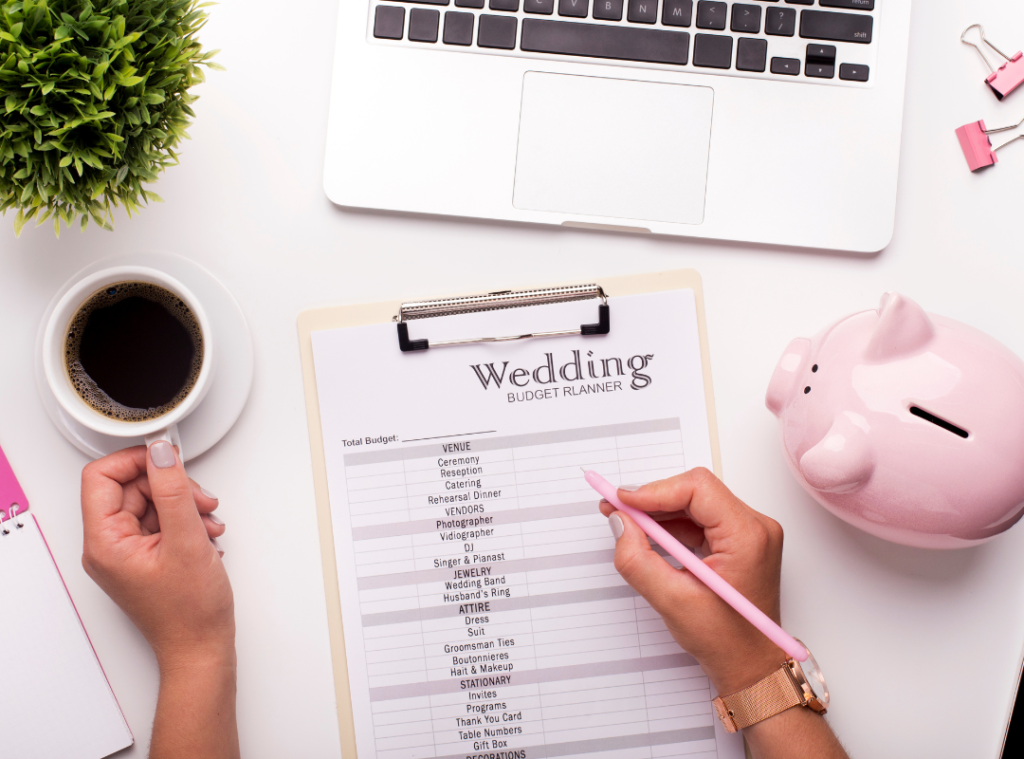Welcome to our article about wedding invitations and stationery. We are sharing an introduction to selecting wedding invitations and stationery. Your wedding invitations and stationery selections really set the stage for your wedding day. Wedding invitations are more than just a means to inform your guests about the where and when; they are a first glimpse into the style and theme of your wedding.
When we started this process for my daughter’s wedding we looked at online wedding invitation sellers as well as stationery shops in our area. Both offer great options. We decided to go with an online option. This was easy for us because we don’t live in the same town and it was easier for us to coordinate online. I also felt comfortable doing the research to make sure we were setting things up correctly. I don’t think you can go wrong either way. Our invitations came out beautiful and very custom looking and I know had we ordered locally, they would have as well.
So, let’s get started. There are so many choices when it comes to your wedding stationery – from traditional to modern, formal to casual – whatever you select, it speaks volumes about the style of the celebration to come. In this blog, we will delve deep into the world of wedding invitations and stationery, exploring everything from the intricacies of design elements and personalization to the nuances of etiquette and wording. We’ll guide you through selecting materials and printing options and aligning your stationery with the overall vision of your wedding. Whether you’re dreaming of a lavish affair or an intimate gathering, our insights will help you create the perfect invitations to announce your wedding.
DOWNLOAD A COPY OF OUR WEDDING PLANNING CHECKLIST HERE!
Types of Wedding Invitations and What to Include in Your Wedding Stationery Suite
Wedding Invitation Styles
Traditional Wedding Invitations
Traditional wedding invitations are timeless and elegant. They typically feature classic fonts, formal wording, and a restrained color palette. The language used is often formal, following established etiquette – think phrases like “request the honor of your presence”. These invitations usually include the couple’s names, date and time of the wedding, and the venue’s address. Etiquette also dictates certain norms, such as the use of full names, including middle names, and sometimes, the names of the parents hosting the wedding. The style often reflects the formality of the event, with luxurious paper and techniques like letterpress or engraving.
Modern Wedding Invitations
In contrast, modern wedding invitations break away from tradition and embrace contemporary trends. They are often characterized by unique colors, modern typography, and creative layouts. Modern invitations often incorporate elements like personal photos, varying paper sizes and shapes, and non-traditional wording that feels more casual and intimate.
These days we also have the option of online invitations. The rise of digital invitations has also made it easier and more environmentally friendly to send out invites. Digital options can include animated elements, links to wedding websites, and even interactive features like maps or RSVP functions. These invitations are perfect for couples looking to add a personal and modern touch to their wedding.
What’s Included in the Wedding Stationery Suite?
Save The Date Invitations
Not included as part of your wedding invitations but an important part of your complete Stationery Suite is the Save The Date Invitations. Save-the-dates are a prelude to your formal invitations, usually sent out six to eight months before the wedding (we sent our’s 11 months before because it was a bit of a destination wedding). Their primary purpose is to inform your guests about the wedding date well in advance, especially if you’re planning a destination wedding or marrying during peak season. While they don’t need to match your formal invitations, keeping a cohesive design theme can be visually pleasing. These can range from simple postcards to creative magnets or even digital save-the-dates with a video message. The couple will sometimes include an engagement photo on the save the dates as well as a link to their website for more information about lodging, registry, wedding weekend details, and more.
RSVP Cards
RSVP cards are a crucial part of your invitation suite, as they help you manage your guest list and catering needs. Traditional RSVP cards include a response deadline (usually three to four weeks before the wedding) and a way for guests to indicate their attendance. Some also include dinner selections for attendees. Modern variations might include song requests or a space for a personal note. To ensure timely responses, make it as easy as possible for guests to reply by including a pre-addressed and stamped return envelope, or offering an online RSVP option. Online RSVPs have become increasingly more popular. You will likely still include an RSVP card or note with instructions to RSVP inside your wedding invitation envelope.
Wedding Details Card
By carefully selecting your wedding stationery and understanding the nuances of each type, you can create a cohesive, elegant, and personalized introduction to your wedding that excites and informs your guests.
📌 Save This for Later to Your Wedding Board ↓

Designing Your Wedding Invitations
When it comes to wedding stationery, the design elements and personalization you choose are an important part of setting the tone for your wedding day. Let’s explore how color schemes, typography, and personal touches can transform your wedding invitations into memorable keepsakes.
Color Schemes and Themes
The color scheme and theme of your wedding stationery should mirror the overall style and atmosphere of your wedding. Are you planning a classic, elegant affair? Consider soft, muted tones like ivory, blush, or navy. For a more vibrant, energetic wedding, bold colors like fuchsia, teal, or gold can make a striking statement. Seasonal motifs can also inspire your color choices – think pastels for spring, bright hues for summer, rich tones for autumn, and icy shades for winter weddings. Remember, the colors you select will likely extend beyond the invitations to your day-of stationery, like programs and menus, creating a cohesive look throughout your celebration.
Typography and Fonts
Typography is a design choice that can share a little about the style of your wedding. The font you select can dramatically alter the invitation’s overall feel. Traditional weddings often favor classic serif fonts that exude formality and elegance. Contemporary celebrations might opt for clean, sans-serif fonts or playful script fonts that add a modern and whimsical touch. When choosing your font, consider readability and how well it complements your design. Experiment with different font pairings – perhaps a bold typeface for your names and a simpler one for the details – to create a dynamic and engaging invitation.
Personal Touches
Your wedding is a celebration of you and your partner! And your invitations should reflect that. Personal touches can turn standard stationery into a one-of-a-kind creation. Consider including elements that represent something about yourselves or give a glimpse into your wedding day. This could be a beautiful stamp, ribbon to tie in wedding colors or custom envelope liners. For an extra personal touch, custom monograms or crests that combine your initials or symbols meaningful to you both can add a sophisticated and bespoke element to your stationery. These personalized details not only add charm and character to your invitations but also make them deeply meaningful and memorable for you and your guests.
In conclusion, the design elements and personalization of your wedding stationery are not just details; they are expressions of your style and story. By carefully selecting colors, typography, and unique touches, you can create invitations that are not just informative but also a beautiful representation of your union.
Material and Printing Options for Wedding Stationery
Selecting the right material and printing technique for your wedding invitations is as crucial as the design itself. These choices not only affect the look and feel of your invitations but also set the tone for the event. Let’s talk about the various paper types and printing methods, as well as eco-friendly options, to help you make an informed decision for your invitations.
Paper Types
The paper you choose for your invitations can greatly influence their overall aesthetic. Here’s a look at some popular options:
- Cardstock: This is a classic and versatile option, offering a smooth, sturdy base for various printing techniques. It comes in various weights and finishes, allowing for a range of textures from matte to glossy.
- Linen: Linen paper has a subtle, woven texture that adds a touch of elegance and sophistication. It’s perfect for more formal weddings and works well with most printing methods.
- Parchment: For a vintage or rustic feel, parchment paper is ideal. Its aged appearance and slightly translucent quality give it a unique charm, perfect for creating an old-world or romantic atmosphere.
Printing Techniques
The printing method you choose can add dimension and character to your invitations. Here are some popular techniques:
- Letterpress: This traditional method presses the design into the paper, creating a textured, handcrafted feel. It’s ideal for a classic, elegant look but can be more expensive due to the specialized process.
- Engraving: Engraving offers a raised effect on the text and design, exuding luxury and formality. While beautiful and timeless, it’s one of the pricier options.
- Thermography: Thermography produces a similar raised effect to engraving but at a lower cost. It involves adding a resin powder to the ink and then heating it. However, the range of colors and paper types is somewhat limited.
- Digital Printing: This is the most cost-effective and versatile option. Digital printing allows for a wide range of colors and designs, including detailed imagery and photographs. While it lacks the tactile quality of other methods, it offers more flexibility in design.
Eco-Friendly Options
There are several sustainable choices:
- Recycled Paper: Made from post-consumer waste, recycled paper reduces environmental impact and can still be elegant and high-quality.
- Seed Paper: This unique option allows guests to plant the paper after use, growing flowers or herbs as a living reminder of your wedding.
- Soy or Vegetable-Based Inks: These inks are less harmful to the environment than petroleum-based alternatives and offer a wide range of vibrant colors.
By understanding the various materials and printing options, as well as eco-friendly alternatives, you can choose wedding stationery that not only aligns with your aesthetic vision but also suits your values and budget. Remember, your invitations are the first glimpse your guests will have of your wedding, so make it count!
📌 Save This for Later to Your Wedding Board ↓

Budgeting for Wedding Invitations and Stationery
Navigating the budget for your wedding stationery can be a delicate balance. It’s important to understand the factors that influence costs and how to make smart choices that align with your financial plan. Here, we break down the aspects of budgeting for wedding stationery, from understanding average costs to knowing where to save and where to splurge.
Average Costs and Factors Affecting Pricing
The cost of wedding stationery varies widely based on several factors:
- Design Complexity: Intricate designs, multiple colors, and custom graphics can increase the price.
- Printing Method: Traditional methods like letterpress and engraving are typically more expensive than digital printing.
- Paper Quality and Type: Higher quality papers or unique materials like linen or parchment can add to the cost.
- Additional Elements: Embellishments like ribbons, wax seals, or custom envelopes also contribute to the overall price.
- Quantity: The number of invitations needed can impact the cost significantly.
On average, couples can expect to spend anywhere from a few hundred to several thousand dollars on their wedding stationery, depending on these factors.
Tips for Saving Money Without Compromising on Quality
- Simplify the Design: Choose a simpler design or limit the number of colors to reduce printing costs.
- Digital Printing: Opt for digital printing, which offers a wide range of design options at a lower cost.
- Bulk Orders: Ordering all your stationery (invitations, RSVP cards, thank-you cards) from the same supplier can sometimes reduce costs.
- DIY Elements: Consider adding handcrafted elements yourself, like tying ribbons or adding seals.
- Reduce Physical RSVPs: Use online RSVPs for a portion of your guests, especially those who are tech-savvy.
When to Splurge vs. When to Save
- Splurge on the Main Invitation: This is the centerpiece of your stationery suite and sets the tone for your wedding.
- Save on Inserts: Secondary pieces like maps or accommodation cards can be simpler or even digital.
- Splurge on Personalization: If a custom monogram or design has a special meaning to you, it can be worth the extra cost.
- Save on RSVP Cards: Considering digital or postcard-style RSVPs can cut costs without affecting the elegance of your main invitation.
By carefully considering these factors and tips, you can create beautiful and memorable wedding stationery that aligns with your budget. Remember, the key is to prioritize elements that are most important to you and find creative ways to manage costs in other areas.
Etiquette and Wording for Wedding Invitations
Mastering the etiquette of wedding invitation wording can be tricky – you want to respect tradition while accommodating modern sensibilities. The way you address and word your invitations not only conveys the formality and tone of your wedding but also reflects respect and consideration for your guests.
Proper Etiquette for Addressing and Wording Wedding Invitations
The standard format for traditional wedding invitations typically includes the hosts’ names (often the parents of the bride or groom), followed by an invitation to attend the wedding, the names of the couple, and the details of the ceremony.
When addressing envelopes, use full names (including middle names) and formal titles. For a more modern or casual invitation, the wording can be less formal and more reflective of your personal style, possibly omitting titles and using first names only.
Handling Special Situations
Navigating family dynamics, such as divorced or remarried parents, requires tact. For divorced parents who are both hosting, list each parent separately, with the mother’s name first. In blended families, if step-parents are involved in hosting or if the couple is hosting with their parents, include all names in a manner that respects their roles and relationships. The key is clarity and inclusivity, ensuring that the invitation respectfully acknowledges all who are significant in this occasion.
Sample Texts for Different Wedding Tones
- Formal: “Mr. and Mrs. John Smith request the honor of your presence at the marriage of their daughter, Elizabeth Anne Smith, to Michael Charles Johnson, son of Mr. and Mrs. David Johnson, on Saturday, the twenty-third of May, two thousand twenty-three, at five o’clock in the evening, Grace Cathedral, San Francisco, California.”
- Casual: “Elizabeth and Michael are tying the knot! Join us for a celebration of love, laughter, and happily ever after on May 23, 2023, at 5 PM, at Grace Garden, San Francisco. Dinner, dancing, and merriment to follow.”
- Non-Traditional: “Love is in the air! We’re saying ‘I do’ in our own way and would love for you to be part of it. Elizabeth Smith and Michael Johnson invite you to join their wedding adventure on May 23, 2023, at the whimsical Grace Garden in San Francisco. Festivities to commence at 5 PM.”
Adapting the wording of your wedding invitations to suit the style and tone of your wedding, while respecting traditional etiquette and addressing complex family dynamics, ensures that your invitations are both beautiful and sensitive to the nuances of your special day.
Timing and Mailing Your Wedding Invitations
The timing and mailing of your wedding invitations are critical steps in your planning process. They not only ensure that your guests are informed in a timely manner but also help you manage your guest list efficiently. Let’s break down the ideal timeline for your invitations and share some tips for handling responses and managing your guest list.
Ideal Timeline for Designing, Printing, and Mailing Invitations
- Designing: Start designing your invitations at least six months before your wedding. This gives you ample time to select a style, finalize the wording, and make any revisions.
- Printing: Allow at least one month for printing, especially if you’re using techniques like letterpress or engraving, which can take longer.
- Mailing: Send out your invitations about six to eight weeks before the wedding. If you’re having a destination wedding or many out-of-town guests, consider mailing them ten to twelve weeks in advance.
Handling International Guests and Early RSVPs
- For international guests, mail invitations even earlier (about three months before the wedding) to accommodate longer postal times and travel planning.
- Include a note or separate insert with information about travel and accommodations to assist them.
- Encourage early RSVPs from international guests to ensure they have enough time to make travel arrangements.
Tips for Organizing Responses and Managing Your Guest List
- RSVP Tracking: Consider setting up an online system for tracking RSVPs. This can be a dedicated wedding website or a simple spreadsheet.
- Follow-up: Set a deadline for RSVPs (typically two to three weeks before the wedding). After this date, follow up with guests who haven’t responded. This is crucial for finalizing your headcount for catering and seating arrangements.
- Guest List Management: Keep your guest list organized with categories (e.g., family, friends, work colleagues). This helps in managing plus-ones and understanding the dynamics of your guest list.
- Plan B for Late Responses: Have a plan for guests who RSVP after your deadline. Knowing how to accommodate them gracefully, or having a polite way to explain that the final numbers have already been given to vendors, is important.
By adhering to this timeline and utilizing these tips for managing responses and your guest list, you can ensure a smooth and stress-free process leading up to your big day. For more tips for managing your wedding timeline, CLICK HERE to read our Timeline Blog. Remember, the key is to be organized and proactive in your approach to handling your wedding invitations.
Coordinating Wedding Stationery Elements
Achieving a harmonious and aesthetically pleasing wedding requires attention to detail, and this extends to coordinating your stationery elements. Your wedding invitations set the tone for your event, and carrying that theme throughout all your stationery creates a cohesive and polished look. Let’s explore how to effectively match your invitations with other stationery items and maintain consistency in design and theme.
Matching Wedding Invitations with Other Stationery
- Menus, Programs, and Thank-You Cards: These are key elements of your wedding stationery suite. To create a unified look, use the same color scheme, fonts, and design motifs that you chose for your invitations. For instance, if your invitations feature a particular floral design and a specific shade of blue, incorporate these elements into your menus, ceremony programs, and thank-you cards.
- Day-of Stationery: Don’t forget about the smaller details like place cards, seating charts, and signage. Ensuring these items reflect the design of your invitations helps to enhance the overall aesthetic of your wedding day.
- Consistency in Materials: Using similar paper types and printing techniques across all your stationery can also contribute to a unified appearance. This consistency in materials not only looks elegant but also gives a sense of quality and thoughtfulness.
Consistency in Design and Theme
- Maintain a Common Thread: Identify a key element in your invitation design – be it a graphic, a monogram, or a specific pattern – and weave it throughout your entire suite of stationery. This element becomes a part of your wedding’s visual identity.
- Theme and Tone Consistency: If your wedding has a specific theme (e.g., rustic, vintage, modern), ensure that all your stationery reflects this. The tone of your wedding (formal, casual, whimsical) should also be evident in your stationery choices, providing guests with a consistent experience from the invitation to the thank-you card.
- Customization: Don’t hesitate to tweak designs slightly for different stationery items. For example, while your invitations might feature an elaborate design, you could opt for a more simplified version of the same motif for smaller items like place cards.
By thoughtfully coordinating all elements of your wedding stationery, you not only enhance the visual appeal of your wedding but also create a memorable experience for your guests. This attention to detail shows a level of care and intention that will not go unnoticed and will be appreciated by all who are part of your wedding day.
📌 Save This for Later to Your Wedding Board ↓

In Conclusion
As we wrap up this article, it’s important to remember the role that wedding stationery plays in your celebration. From the initial save-the-dates to the heartfelt thank-you cards, each piece of stationery is an important part of the big picture. These elements do more than just convey information; they set the tone, build anticipation, and become cherished keepsakes that encapsulate the essence of the day.
Choosing your wedding stationery is a unique opportunity to express your personal style and the narrative of the wedding day. Whether it’s through elegant traditional designs that exude timeless romance, modern creations that showcase your innovative spirit, or eco-friendly options that speak to your values, your stationery is a reflection of who you are as a couple. It’s about finding that perfect harmony between form and function, where aesthetics meet practicality in a beautiful dance.
In closing, we wish you joy and inspiration as you design stationery that captures the heart of your wedding day, creating memories that you and your guests will treasure for years to come.



